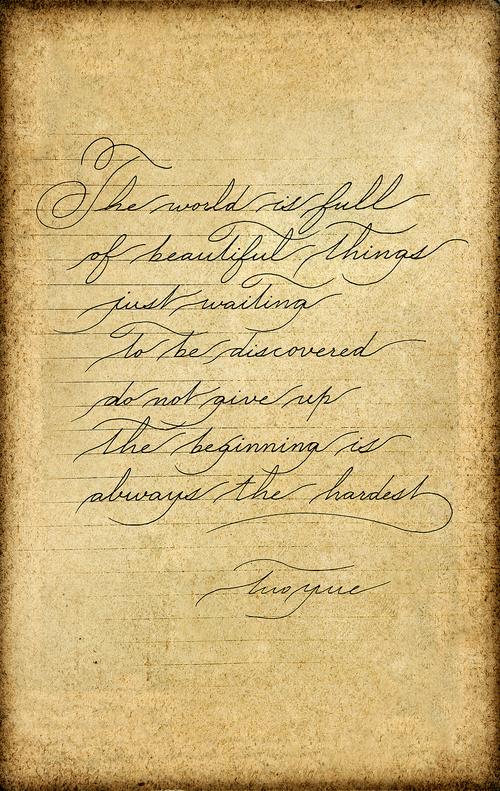您所在的位置:首页 - 艺术 - 正文艺术
传统的艺术英文
![]() 铵林
2024-05-07
【艺术】
848人已围观
铵林
2024-05-07
【艺术】
848人已围观
摘要Title:TraditionalArtStylesExplainedinEnglishIntroduction:Artisticstyleshaveevolvedovercenturies,refl
Title: Traditional Art Styles Explained in English
Introduction:
Artistic styles have evolved over centuries, reflecting cultural, historical, and social aspects of different regions. Traditional art styles embrace the rich heritage of various cultures across the globe. In this article, we will explore and explain some of the traditional art styles in English.
1. Renaissance Art:
Renaissance art refers to the style that emerged in Europe during the 14th to 17th centuries. It emphasized realism, perspective, and a revival of classical Greek and Roman art. Key characteristics include humanism, naturalism, and the use of oil paints. Prominent Renaissance artists include Leonardo da Vinci, Michelangelo, and Raphael.
2. Baroque Art:
The Baroque art style originated in Europe in the late 16th century and prevailed until the mid18th century. It is known for its grandeur, dramatic compositions, and ornate details. Baroque art often portrayed religious themes with intensified emotions and theatrical lighting. Gian Lorenzo Bernini and Caravaggio were prominent Baroque artists.
3. Impressionism:
Impressionism emerged in the late 19th century in France as a reaction against the strict rules of academic art. This style aimed to capture fleeting moments, emphasizing the play of light and color. Impressionist works feature visible brushstrokes and an emphasis on depicting the effects of light on the subject. Famous Impressionist painters include Claude Monet, PierreAuguste Renoir, and Edgar Degas.
4. Cubism:
Cubism, developed by Pablo Picasso and Georges Braque in the early 20th century, revolutionized the concept of representation in art. It introduced fragmented forms and multiple perspectives, challenging traditional notions of space and dimension. Cubist paintings incorporated geometric shapes and abstract forms, often depicting subjects from multiple angles simultaneously.
5. Japanese Ukiyoe:
Ukiyoe, meaning "pictures of the floating world," is a traditional Japanese woodblock print style that flourished during the Edo period (17th19th century). Ukiyoe prints depicted everyday life, landscapes, kabuki actors, and beautiful women. Artists like Hokusai and Utamaro popularized this style, which greatly influenced Western artists such as Vincent van Gogh and Claude Monet.
6. Islamic Calligraphy:

Islamic calligraphy is an art form that is deeply rooted in the Islamic tradition. It uses Arabic script to create intricate and decorative writing. Islamic calligraphy often includes verses from the Quran and is found in various forms of Islamic art, including architecture, textiles, and manuscripts. The art of calligraphy is highly respected in Islamic culture for its spiritual and aesthetic value.
Conclusion:
Appreciating traditional art styles allows us to understand the diverse cultural expressions that have shaped our history. Whether it is the realism of Renaissance art, the dramatic flair of Baroque art, or the breakthrough techniques of Impressionism and Cubism, each traditional art style embodies its own unique characteristics and significance. Exploring these styles in English helps to bridge cultural gaps and fosters a deeper appreciation for the creativity of artists around the world.
Tags: 传统艺术英文短语 传统艺术的英文短语 传统艺术的英文
版权声明: 感谢您对【奚诗百科网】网站平台的认可,无特别说明,本站所有文章均归【奚诗百科网】平台所有,转载请说明文章出处“来源【奚诗百科网】”。 https://www.sptgyg.com/post/4619.html
上一篇: 易烊千玺的音乐宝贝叫什么
下一篇: 死亡文学常识
最近发表
- 探索北京,30个免费景点全攻略
- 开启你的学术之旅,研究生择校咨询的艺术与科学
- 探索北京,免费景点的宝藏之旅
- 华为云账号登录官网,一站式指南
- 三星Galaxy S7 Edge,2016年的旗舰手机及其历史价值
- 985工程大学排名名单,中国顶尖学府的荣耀与挑战
- 华为荣耀10青春版,青春的风采,一图尽览
- 考研路上的钱包指南,预算大揭秘
- 华为MatePad Pro,您的智能生活新伙伴
- 时光回响,一千首经典老歌曲大全
- 考研路上的灯塔,揭秘考研辅导机构的神奇力量
- 穿越时空的旋律,一千首经典老歌曲的不朽魅力
- 旋律中的世界,全球著名音乐剧的魅力与影响
- 三星手机图片大全,视觉盛宴,科技与美学的结晶
- 旋律中的世界,探索全球著名音乐剧的魅力
- 三星W系列手机,高端奢华与卓越性能的完美结合
- 函授硕士研究生报考条件,开启你的远程学习之旅
- 英文经典音乐剧,穿越时空的旋律与故事
- 福建省美术学院排名大揭秘,艺术殿堂的十座灯塔
- 探索京城,北京免费景点全攻略
- 四书五经,古典智慧的宝库
- 索尼摄像机使用指南,轻松掌握拍摄技巧
- 考研路上的灯塔,为何选择多样的考研课程至关重要
- 旋律与梦想,探索著名英语音乐剧的魅力与影响
- 电影中的音乐之旅,西方音乐电影的魅力与启示
- 深入了解考研课程班的费用,一个全面的指南
- 探索北京,揭秘免门票的宝藏景区
- 考研课程费用解析,如何判断合适的投资
- 艺术之门,揭秘美术公办二本最低分数线的秘密
- 探索北京,十大必去景点深度游
- 舞动经典,探索歌舞剧电影的魅力
- 戴尔最新款笔记本型号,性能、特点与购买指南
- 深入解析,考研课程费用大揭秘
- 揭秘考研课程费用,如何辨别正规课程,避免经济与时间的双重损失
- 荣耀Magic系统,智能生活的新篇章
- 电影之旅,探索英美经典电影的魅力
- 考研路上的金钥匙,揭秘考研课程的价值与成本
- 探索北京,十大免费景点排名及深度体验指南
- 探索云端世界,华为云账号登录官网的便捷之旅
- 舞动梦想,歌唱生活,美国歌舞剧电影的魅力与影响
- 2023年十大名牌手机,科技与设计的巅峰对决
- 苹果与富士康的舞步,全球供应链中的合作与挑战
- 三星GTS3850,智能生活,触手可及
- 艺术之门,2023年美术学院录取分数线排名解析
- 探索北京,免费景点的宝藏之旅
- 探索金沙三宝,揭开神秘面纱,发现生活的艺术
- 三星2016年的辉煌时刻,价格与价值的双重奏
- 音乐剧的璀璨明珠,三宝作品全解析
- 考研课程价格表,透明化选择,助力你的考研之路
- 探索文学的宝库,文学类书籍类型大全


